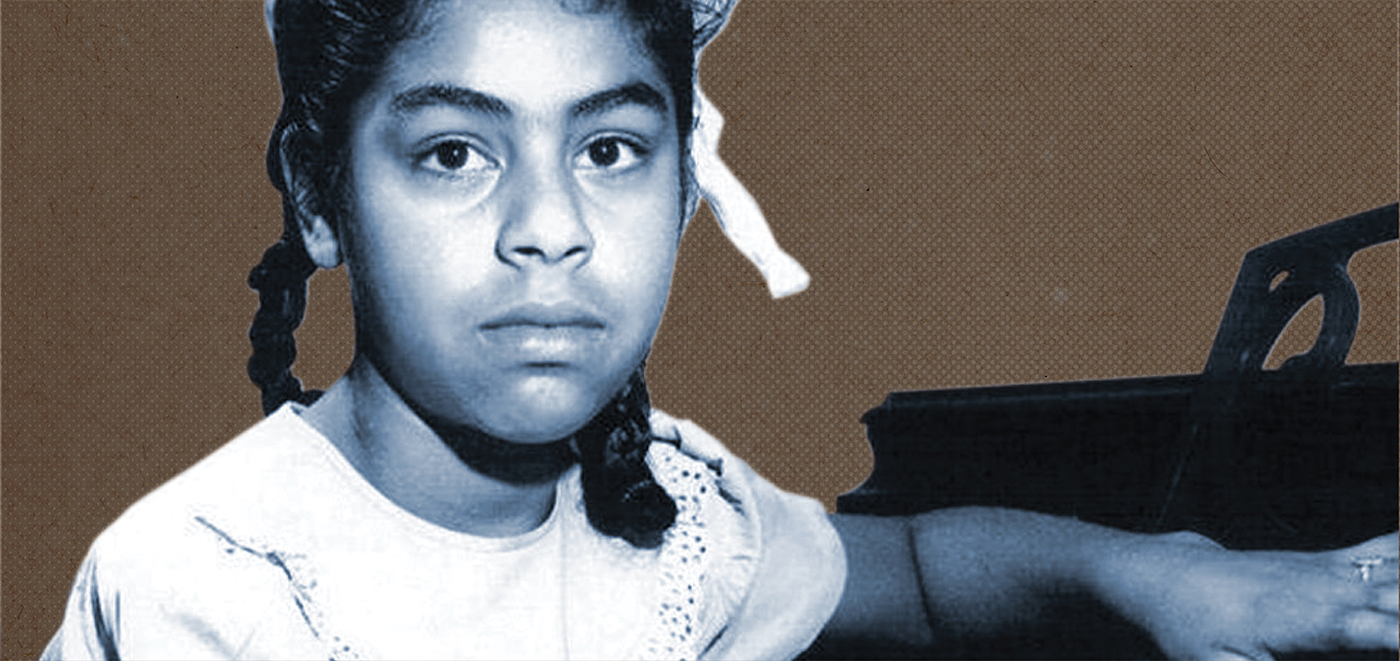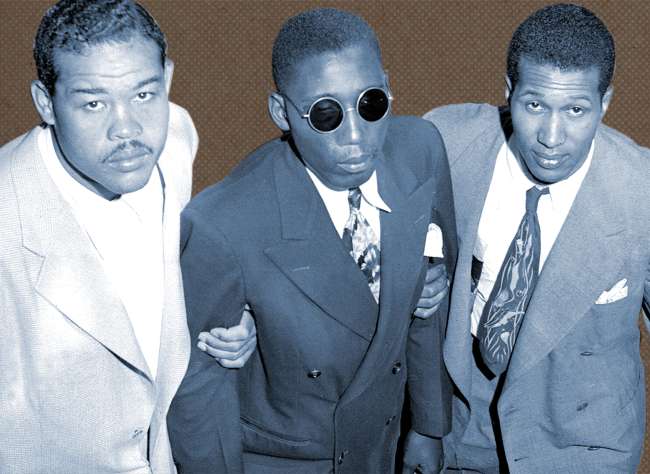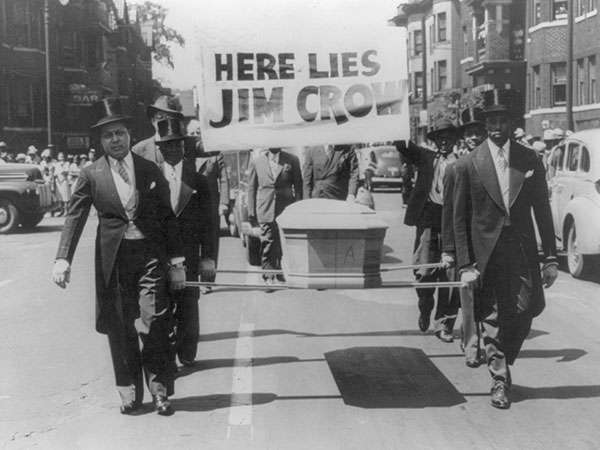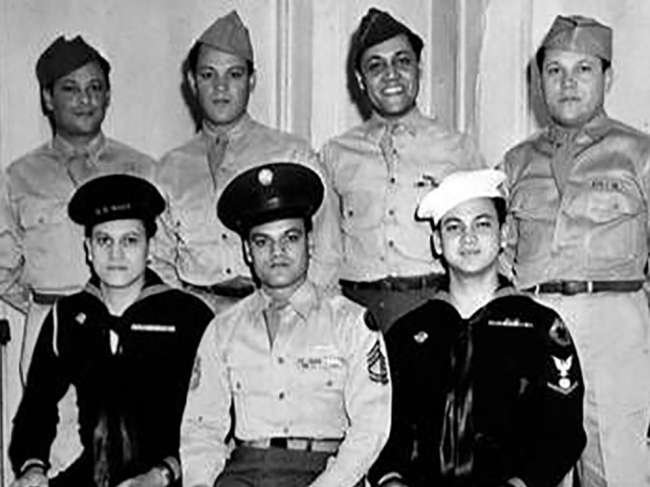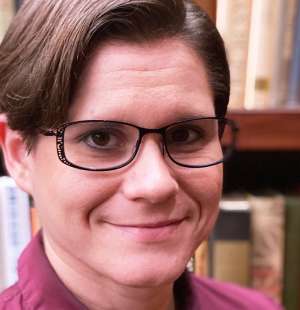Listen: Apple Podcasts, Spotify.
About the Episode
In February 1946, a California Court heard opening arguments challenging the practice of segregating students of Mexican descent into “remedial schools for Mexicans.” Sylvia Mendez and her family spent the next year of their lives entangled in a court battle. Though they would ultimately prevail and the Court deemed the schools unconstitutional, thus ending legal segregation in California, Sylvia was not permitted to attend the school near her home designated for white children until 1948. This landmark case became an international cause célèbre, and would later be used to justify the “separate is unequal” ruling of 1954’s Brown v. Board of Education.
This week’s episode, hosted by the Museum’s Dr. Kristen Burton and written by executive producer Gemma R. Birnbaum, explores the intersection of civil rights issues that took place during and after World War II. The Mendez family, who moved to Westminster to care for a farm owned by a family of Japanese descent who were forced to relocate to an incarceration camp, were represented by David Marcus, a Jewish American attorney who dedicated his life to fighting segregation in public facilities across Southern California. Marcus brought on assistance from NAACP attorneys Thurgood Marshall and Robert Carter as well as the ACLU, the American Jewish Congress, the League of United Latin American Citizens, and the Japanese American Citizens League. The case caught the attention of then-Governor of California Earl Warren, who would later be appointed Chief Justice of the Supreme Court and would preside over the Brown v. Board of Education case. Warren was influenced by what he saw in the months and years after the Mendez v. Westminster ruling and how desegregating public schools in California had a positive impact on black, latino, and indigenous American students across the state.
The title for this week’s episode comes from Thurgood Marshall’s amicus brief for the case, in which he called it a check of “the temper of the courts,” to see how ready the court system might be to begin the process of overturning segregation across the country.
New episodes are released every other Friday. Catch up on all episodes of “To the Best of My Ability” and be sure to leave us a review on your favorite podcast platform.
Topics Covered in this Episode
- Mendez v. Westminster
- Hoover Schools for children of Mexican descent
- Executive Order 9066 and Japanese American Incarceration
- NAACP Attorneys Thurgood Marshall and Robert Carter
- California Governor and Chief Justice of the Supreme Court Earl Warren
Featured Historian
Nannette Regua
Nannette Regua is a college history instructor and holds a Master’s Degree in Women’s History from Sarah Lawrence College and a Master’s Degree in History from San José State University. She earned her undergraduate degree in English with a minor in Women’s Studies from San José State University. She is the co-author of the cultural photo history book Mexicans in San José which documents the rich history of Mexican and Mexican Americans in San José. In 2012, her peer-reviewed article “Women in the Chicano Movement: Grassroots Activism in San José” was published in The Journal of Chicana/Latina Studies.

Related Content
-
Episode 7 – A Dangerous, Costly and Heartbreaking Process
In 1946, two Black WWII veterans were victims of heinous hate crimes just two weeks apart. It took public outcry from well-known figures like Orson Welles and Langston Hughes, but President Truman finally began to address the racial injustices and violence being committed across the nation, ultimately culminating in the desegregation of the military in 1948.
-
Lecture: Segregation from 1941-1945
From public schools to the United States military, segregation was a way of life during WWII. Due to the demand for skilled labor and soldiers, the war helped bring to the forefront issues of inequality in education and other aspects of life that black communities had been fighting against for decades. Watch to learn about the men and women who set the stage for the Civil Rights Movement.
-
Article Type
Commemorating National Hispanic Heritage Month
In observance of National Hispanic Heritage Month, The National WWII Museum wishes to share educational highlights of Latino WWII experiences for teachers and students.
-
Contributor
Kristen D. Burton, PhD
Kristen D. Burton, PhD, is a former Teacher Programs and Curriculum Specialist at The National WWII Museum.
Sponsors
"To the Best of My Ability" is part of an ongoing series commemorating the 75th Anniversary of the End of World War II made possible by The Nierenberg Family.
Transcript
Archival Audio - American Racial Tolerance in World War II
Those who seek selfish power are quick to set American against American, systematically and purposefully, by singling out one minority or another as a target for old and reasonless hatreds in the name of Americanism. But in the spirit of Nazism, rabble rousers spread doctrines closely resembling those inspired by Adolf Hitler, with sometimes appalling consequences. They encourage neighbors to hate and quarrel with each other. But for every American publicly spreading the doctrines of intolerance, there are today many others carrying on an organized fight for understanding and decency because they know that liberty lies in the hearts of men and women, But when it dies there, no Constitution, no law, no court can save it.
Dr. Kristen Burton
During World War II, California schools segregated students not just into separate black schools and white schools like their Jim Crow neighbors in the south, but they also required students of Mexican descent to attend what were deemed “remedial schools for Mexicans.” Though many of the children were born and raised in the United States, California law required that they attend these schools, which were typically no more substantial than shacks, and often lacked resources like books, school supplies, or even enough teachers. When Felicitas and Gonzalo Mendez tried to enroll their children in the nearby public elementary school after moving to a ranch in Westminster, California, they were told that the school could not accept them, and that they instead must enroll at the remedial school for Mexican children.
The Mendez family spent the next year of their lives entangled in a court battle. Though they would ultimately prevail and the Court deemed the remedial schools unconstitutional, thus ending legal segregation in California, the children were not permitted to attend the school near their home designated for white children until 1948. When their daughter Sylvia finally joined the school, she faced ridicule and cruelty from her classmates.
This landmark case was later used to justify the “separate is unequal” ruling of Brown vs. the Board of Education in 1954, which overturned the1896 Plessy vs. Ferguson ruling that had legalized segregation in the United States.
Archival Audio - Truman Taking the Oath of Office
“I Harry S. Truman do solemnly swear to faithfully execute the Office of President of the United States, and will to the best of my ability, preserve, protect and defend the Constitution of the United States, so help me God.”
Dr. Kristen Burton
You’re listening to “To the Best of My Ability: The Postwar Years” from The National WWII Museum in New Orleans. This is episode 8, “The Temper of the Courts.” I’m your host, Dr. Kristen Burton. This week, a family takes on segregation in California schools, and helps spark a movement that would one day lead to the Supreme Court.
Joining us is Nannette Regua, instructor of history and co-author of Mexicans in San José. Our story begins in Orange County, California to meet the Mendez family.
Nannette Regua
The Mendez family had experience in agricultural work. Felicitas and Gonzalo Mendez were from Orange County. Felicitas is originally—she was from Puerto Rico, which is a US territory, and Gonzalo was from Mexico but became a US citizen. But both had experience in agricultural work and dreamed that one day they would own a farm of their own. Now, as soon as World War II—sorry. Of course, we know that on December 7, 1941, that Japan had attacked the US at Pearl Harbor, and as a result, the United States entered into World War II. Now, as we entered into World War II, there was anti-Japanese sentiment. And there was a significant population of Japanese and Japanese-Americans who lived in California, lived and worked and participated in their communities and raised their families and worked hard to bring home paychecks. However, President Franklin Roosevelt passed Executive Order 9066.
Archival Audio - WWII Film on Japanese Relocation
When the Japanese attacked Pearl Harbor our West Coast became a potential combat zone living in that zone were more than a hundred thousand persons of Japanese NZ two-thirds of them American citizens one-third aliens we knew that some among them were potentially dangerous but no one knew what would happen among this concentrated population if Japanese forces should try to invade our shores military authorities therefore determined that all of them citizens and aliens alike would have to move this picture tells how the mass migration was accomplished neither the army nor the War Relocation Authority relished the idea of taking men women and children from their homes their shops in their farms so the military and civilian agencies alike determined to do the job as a democracy should with real consideration for the people involved
Nannette Regua
As a result, local communities began the efforts of rounding up Japanese and Japanese-Americans—Japanese who were born here, Japanese-Americans—and rounding them up and sending them to various camps throughout California and also in other states in the country like Arizona, for example. Gonzalo Mendez had lived in Orange County, and he had, in fact, gone to school in Orange County. And with his interest in wanting to own a farm someday, his banker, in a conversation with him, told him that there was a family that was of Japanese heritage that was going to have to leave their farm and go to an internment camp during World War II. Gonzalo shared this information with his wife, Felicitas, when he learned through the banker that the family called Munemitsus were being sent away to one of these camps to Poston, Arizona. Felicitas and Gonzalo said, “We would like to rent that farm, and we could maintain it until the Munemitsus can return back after the war.”
Dr. Kristen Burton
After moving into the Munemitsus’ farm and getting settled, Gonzalo asked his sister Soledad to take their children to the elementary school across the street to enroll while he got the farm set up. Soledad brought her niece Sylvia, her two nephews, and her own two daughters to the school to enroll.
Nannette Regua
She took the five children and spoke to the secretary. “Hello.” She arrived, Soledad, and said, “I'd like to enroll these children into your lovely school.” And the secretary responded at the school that she could not enroll the three children, the Mendez children, because they were Mexican. However, Soledad's two daughters could enroll in the school. They appeared to be not Mexican. They were lighter-skinned, and they had the different last name of Badari [phonetic]. Soledad said, “Well, I'm not going to enroll my two daughters if the three of my brother's children cannot enroll here,” and she left. Soledad went back to the house, to the farm, told her brother, “I couldn't enroll the children,” and she explained to him what happened.
Mr. Mendez was shocked, and he proceeded to say, “There must be some mistake. I'll go tomorrow, and I'll talk to the principal.” He went the following day, spoke to the principal, but the principal said, “I can’t accept your children. They’re Mexican. It is against the law to have Mexican children at this school. This is a school for white children. You have to take your kids to the Mexican school.” So Mr. Gonzalo responded and said, “That's not right, and that law needs to change.” He went home, Mr. Mendez, told his wife, Felicitas, what had happened, and he told Felicitas, “We're going to fight this. This is unacceptable. And if we have to take this school district to court, we will.”
Dr. Kristen Burton
Gonzalo and Felicitas were determined to change the law and began to seek legal counsel. In the interim, having no other choice, they enrolled their children in the remedial school. The school itself was a shack, lacking any kind of insulation. There weren’t any books provided to the students, and the school, called the “Hoover School,” was located next to a cow pasture.
Nannette Regua
And then, also, there was an electric wire that ran all around the cow pasture that prevented the cows from escaping, but it was also alongside—that electrical fence was alongside the school. So you can imagine how dangerous that was. And Sylvia recalls that there was one little girl who went over and touched the wire and got electrocuted and was severely injured. Sylvia also describes that at this Mexican school—that the students were not taught academics. Instead, they were taught how to cook, how to clean, how to sew. There were no classes that were about the intellectual development of the school children. By attending a Mexican school for Mexican children, this prevented them from one, having an adequate education and equal to that of the white children, but it prevented them from socializing and socializing with white children and vice versa.
Dr. Kristen Burton
By chance, Gonzalo heard about an attorney named David Marcus. Marcus was a constitutional lawyer and Jewish American, and he had experienced his own share of discrimination in the 1930s and early 1940s. Through his career, he had been successful in ending segregation in public parks and pools in Los Angeles. Gonzalo sought him out for a meeting.
Nannette Regua
Mr. Mendez had a meeting with Mr. Marcus, and Mr. Marcus said, “I think you have a really good case, that it is a violation of the constitutional rights of your children to not be able to attend a public school that's in your neighborhood, and because they are Mexican, they are forbidden from enrolling in that white school. And it violates the 14th Amendment, which grants us as US citizens our equal rights.” Marcus told Mr. Mendez, “I think you have a great case. However, see if you can find more children that have been forbidden from enrolling in local schools, and possibly, we could have a class-action lawsuit against the school districts to end—show that the children were forbidden from their equal rights.”
Mr. Mendez started contacting other parents in the community, and in fact, in other school districts, and asking the Mexican parents, “Have you tried to enroll your children in your local schools? Have you ever faced principals refusing to enroll your children and sending them to a Mexican school?” It took awhile for him to do his research, and Mr. Mendez, though, he met four other families who were willing to join him in his fight and participate in this lawsuit.
Dr. Kristen Burton
As more parents joined the lawsuit, David Marcus agreed to pursue the case. They moved forward with suing four school districts: Westminster, Orange Grove, Santa Ana, and El Modena. It was estimated that more than 5,000 children of Mexican heritage had been discriminated against when trying to enroll in school.
The case first came before Judge Paul J. McCormick, who ruled in favor of the plaintiffs and ordered the school district to desegregate. Some schools started to desegregate, while others refused. The school districts, meanwhile, refused to accept the decision and appealed the verdict. The case then moved to the Ninth Circuit Court of Appeals, and David sought assistance from colleagues at the NAACP, the ACLU, the American Jewish Congress, the League of United Latin American Citizens, and the Japanese American Citizens League to continue the battle. The court costs were funded primarily from the profits from the Mendez’s farm, which had proved to be lucrative.
Nannette Regua
The Mendez’s offered to pay the wages of some of the folks who testified during the trial. The individuals who were going to testify on behalf of the Mendez had concerns that they couldn't take a day off of work, and the Mendez said, “We'll pay you for your missed day wages so that you can come and testify in this court case.”
Two very important attorneys, black attorneys, for the NAACP participated in the Mendez court case, Thurgood Marshall and Robert Carter. They joined the efforts of the Mendez and became part of the legal team.
David Marcus brought sociologists, educational researchers, and scholars, and the parents as well, who spoke about their experiences. Sylvia recalls that there was one mother who took the stand and said, you know, “My child cannot attend a white school and get the education that he deserves, but at the same time, I have a son who's fighting in World War II, and he is fighting for the rights of others. But my own son, who's here trying to get an education, he is unable to have his rights fulfilled as a child and receive an education.”
Dr. Kristen Burton
Young Sylvia, now 8 years old, also took the stand.
Nannette Regua
For Sylvia Mendez, as she recalls how scary this type of court case was being in front of a judge, seeing the other attorneys, but she understood that this was unfair, and she recognized the inadequacy of the school, even as a young child of eight years old. She understood that her school, the Mexican school, was inferior to the white school. It was dangerous. It was unclean. It was intellectually unstimulating, and as she mentioned, it offered no hope for children, and she understood that. And she understood that she had a right to her education, as did her siblings and the other children. And so, she saw herself as somebody who is helping to make change happen, even as a young child. She remembers listening to the other children who were testifying and then describing what their experiences were like and how they felt that they were not given an adequate education.
Dr. Kristen Burton
On April 14, 1947, more than 3 years after the Mendez family first moved to Westminster, the Ninth Circuit Court of Appeals affirmed the district court’s ruling -- but NOT on equal protection grounds, and therefore did not challenge the 1896 Plessy vs. Ferguson ruling that established “separate but equal” as law. Instead, the Ninth Circuit ruled that the segregation in this instance was not racially based, and was thus impermissible regardless of the Plessy ruling. Still, the case provided a precedent and critical experience for Thurgood Marshall and Robert Carver who would go on to represent Linda Brown’s family in the Brown vs. the Board of Education case in Topeka, Kansas.
Nannette Regua
And in Linda Brown's case, she was told because she was black. And little Linda Brown then, her parents, just like the Mendez, understand that this is not right. It is a practice that forbids them of their constitutional rights, and the Browns decide to fight in the courts. And so we have this very important court case, Brown v. Board of Education, that goes to the courts and makes its way all the way up to the US Supreme Court. The Brown legal team has some familiar faces, Robert Carter and also Thurgood Marshall. And they have had this practice with the Mendez case. And so here we have this legal dream team again that is challenging these racist practices and go to the Supreme Court and are successful using the 14th Amendment, just like they did in the Mendez case, and arguing that these schools, black schools and white schools, were in inherently unequal and it does not provide the opportunity for black children and white children to learn from one another. And it also provides an inferior education for black children. Very similar cases between Mendez and Brown. Mendez, it ended segregation in public schools in California. Brown ended segregation in public schools in the nation and also extended to other public facilities.
Governor Earl Warren of California, after the 1946—Governor Earl Warren, after the 1947 appeals case in the Ninth Circuit that affirmed the original Mendez v. Westminster case, Governor Warren is affected by those court cases and the rulings. And he then declares that segregation in public schools has no place in California. This is a very, very monumentous (sic) court decision, and also, with the support of Governor Earl Warren, it's revolutionary for California. Not only does California then prohibit the practice of segregation in public schools for Mexican children, but it also extends to Asian-American children and also Native-American children who have been segregated as well in public schools.
Dr. Kristen Burton
After the war was over and the Munemitsus were released from incarceration, the two families continued to live on the farm together through the summer, sharing the workload and splitting the profits. Because the Mendez family had taken over the farm while their neighbors were incarcerated and kept it safe and running, the Munemitsus fared better than so many other Japanese American families who ultimately lost their homes and property during the war.
Governor Warren went on to become Chief Justice of the Supreme Court, and presided over the Brown case, which finally overturned Plessy vs. Ferguson and declared that separate IS unequal. Gonzalo Mendez passed away in 1951, never seeing the impact that the case he fought so hard for ultimately had three short years later with the Brown vs. the Board of Education ruling. Young Sylvia went on to become a nurse, and retired after 30 years of service. At the age of 84, she continues to speak to students around the country to tell her family’s story and advocate for racial justice and educational equity. On February 15, 2011, 70 years after the court case that changed the lives of so many children, she was awarded the Presidential Medal of Freedom by President Barack Obama. She stood alongside fellow recipients former President and World War II veteran George H.W. Bush, Congressman and civil rights activist John Lewis, industrialist and philanthropist Warren Buffet, artist Jasper Johns, and Holocaust survivor Gerda Weissmann Klein.
Archival Audio - President Barack Obama
For Sylvia Mendez, a lifelong quest for equality began when she was just eight years old. Outraged that their daughter had to attend a segregated school, Sylvia's parents linked arms with other Latino families to fight injustice in a California federal court, a case that would pave the way for Brown versus Board of Education. The next year, when a classmate taunted Sylvia saying that Mexicans didn't belong there, she went home in tears, begging to leave the school. Her mother wouldn't have it. She told Sylvia, "Don't you realize that's why we went to court? You are just as good as he is."
And Sylvia took those words to heart. And ever since, she has made it her mission to spread a message of tolerance and opportunity to children of all backgrounds and all walks of life.
Dr. Kristen Burton
In our next episode and our season finale, “33 Months,” after three years of incarceration without due process, Japanese Americans could finally return to their homes, but for many, they no longer had homes or jobs to return to. While a series of legislative victories followed in the immediate postwar years, it wasn’t until decades later after the Redress Movement gained momentum that there was any formal apology or reparations paid for what these families endured.
From The National WWII Museum, I’m Dr. Kristen Burton. This episode was written by executive producer Gemma R. Birnbaum. Media production manager Jeremy Burson did the sound mixing. Archival audio is courtesy of the National Archives and the Barack Obama Presidential Library.
If you like this podcast, please rate and review us on your favorite podcast platform. Reviews are important to help others find the series. "To the Best of My Ability" is part of an ongoing series of programs commemorating the 75th Anniversary of the End of World War II made possible by The Nierenberg Family.
